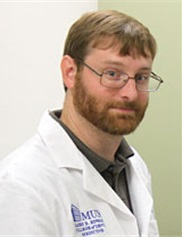Grants Funded
Grant applicants for the 2024 cycle requested a total of nearly $3 million dollars. The PSF Study Section Subcommittees of Basic & Translational Research and Clinical Research evaluated more than 100 grant applications on the following topics:

The PSF awarded research grants totaling over $650,000 dollars to support more than 20 plastic surgery research proposals.
ASPS/PSF leadership is committed to continuing to provide high levels of investigator-initiated research support to ensure that plastic surgeons have the needed research resources to be pioneers and innovators in advancing the practice of medicine.
Research Abstracts
Search The PSF database to have easy access to full-text grant abstracts from past PSF-funded research projects 2003 to present. All abstracts are the work of the Principal Investigators and were retrieved from their PSF grant applications. Several different filters may be applied to locate abstracts specific to a particular focus area or PSF funding mechanism.
The Effects of Nicotine Exposure on Cranial Suture Stem Cells
James Cray PhD
2017
Medical University of South Carolina
Pilot Research Grant
Cranio/Maxillofacial/Head and Neck
Craniosynostosis is a birth defect defined as the premature fusion of the suture(s) of the skull occurring in 1:1800-2500 births. The Centers for Disease Control and Prevention, National Birth Defects Study has published data suggesting that “environmental” exposures including maternal nicotine exposure may exacerbate incidence and or severity of craniofacial anomalies including craniosynostosis. A proposed mechanism of craniosynostosis is the disruption of the balance of proliferation and differentiation of the osteogenic precursors in the perisutural area leading to bone overgrowth within cranial sutures. Recently, undifferentiated cells identified uniquely as Gli1+ or by traditional markers Cd44+ Sca1+ Cd45- Cd34- have been identified in craniofacial bones and sutures. Further, ablation of these undifferentiated cells has been correlated with fusion of the sutures (craniosynostosis). For these reasons, we hypothesize that in utero pharmacological exposures will deplete these multilineage cells, resulting in alterations in craniofacial growth and development. In order to test this hypothesis, we propose to answer whether exposure to nicotine in utero deplete defined stem cell populations resulting in altered suture morphology by exposing pregnant wild-type mice and measuring the resultant pups via x-ray cephalometry and a histological assessment of the coronal and posterior interfrontal sutures. In order to investigate depletion of multilineage cells as a mechanism for craniosynostosis, we plan to investigate if nicotine exposure depletes Cd44+ Sca1+ Cd45- Cd34- cell populations in vitro. We will assess depletion of the cell population of interest in heterogeneous suture derived cells treated with a clinically relevant dose of nicotine. To identify the mechanism of depletion we will sort heterogeneous suture cell populations for the Cd44+ Sca1+ Cd45- Cd34- phenotype, then treat with nicotine and assess proliferation, differentiation, apoptosis, autophagy, and senescence. Investigating these newly defined cells and their relationship to suture maintenance will provide insight into future manipulation of these cells for therapeutic benefit as a means of decreasing the need for neurosurgical intervention in cases of craniosynostosis.
 James Cray, Ph.D. is an Assistant Professor in the Department of Oral Health Sciences at the Medical University of South Carolina. He received his doctorate from the university of Pittsburgh and completed a Post-Doctorate Fellowship in Craniofacial Biology in the Plastic Surgery Department at Children’s Hospital of Pittsburgh. Dr. Cray currently directs a research laboratory focused on environmental teratogens that induce craniofacial birth defects and compromised wound healing after calvarial fracture.
James Cray, Ph.D. is an Assistant Professor in the Department of Oral Health Sciences at the Medical University of South Carolina. He received his doctorate from the university of Pittsburgh and completed a Post-Doctorate Fellowship in Craniofacial Biology in the Plastic Surgery Department at Children’s Hospital of Pittsburgh. Dr. Cray currently directs a research laboratory focused on environmental teratogens that induce craniofacial birth defects and compromised wound healing after calvarial fracture.